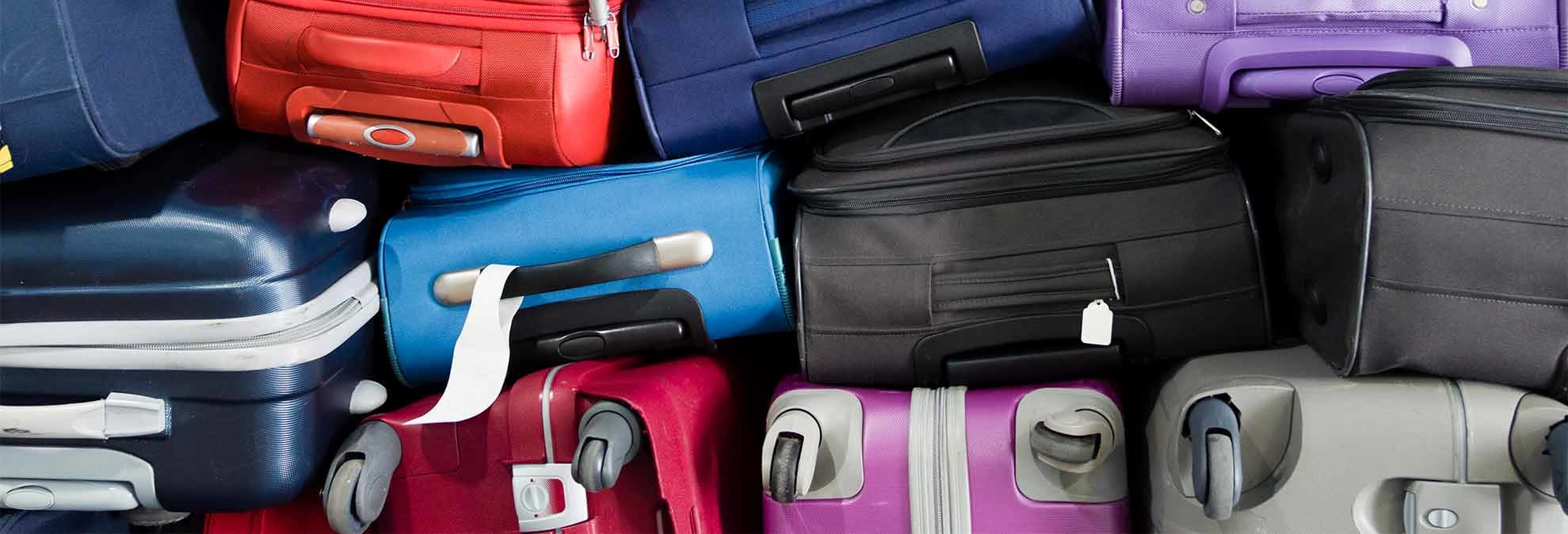
Luggage Buying Guide

Your luggage should do its job well, no matter your destination. Whether you’re flying down to Rio, hopping aboard that midnight train to Georgia, or cruising to Margaritaville, it should be easy to both pack and roll. It should also withstand the insults of curbs, stairs, falls, and baggage-handling crushes. And ideally, its price should leave you with plenty of funds for a ticket to ride.
Combine all these considerations with countless styles, sizes, and prices, and finding the right suitcase can become overwhelming, even among the best luggage brands.
Below are the factors you’ll want to consider when shopping for luggage. They include the modes of transportation you’re likely to use, how long you’ll be traveling, which luggage types and materials you prefer, and which features are important to you.
Check CR’s Guide to Travel for more buying advice and ratings to help make your trips go as smoothly as possible.
Before Buying Your Luggage
These are the questions to consider before you start looking for a new suitcase.
How Do You Travel?
For airplane travel, familiarize yourself with the luggage rules of the airlines you plan to fly on. If you go on road trips, look for bags that are pliable enough to maximize your trunk space. On cruise ships, because baggage is stacked in the boat’s belly before departure, we’ve found that flat, rigid luggage is best. A travel backpack with a rigid back can be useful if you need your hands free while walking, and don’t mind an informal look.
How Will You Store Your Luggage at Home?
Hard-sided bags are the most unforgiving because they won’t always fit into a storage space at home, and they’re impossible to squeeze. Soft-sided, structured bags have more forgiveness on the front and back. If you have no place to store a stand-up suitcase, you may want to limit yourself to duffels.
What Size Luggage Do You Need?
The suitcase size you need will depend mainly on the length of your trip and, if you’re flying, airline luggage restrictions. It also depends on what you’ll need while you’re away. If you travel for business, you’ll need enough room for business attire; for vacations, you’ll have more leeway on what to bring.
Types of Luggage
You can choose from three different types of luggage: personal item, carry-on luggage, and checked baggage. Each has different measurement requirements (size and/or weight), particularly when flying.
To find your bag’s size, measure the height of your luggage from the floor (including wheels) to the top of the handle in its lowered position. Depth is measured from front to back (including the back handle), and width is measured from side to side.
Personal Item
A personal item has to fit underneath the seat in front of you on a plane. While a personal item can include more general bags like briefcases, tote bags, camera bags, laptop bags, and small backpacks, you’ll get the most out of yours if you buy a bag specifically designed to be brought onto a plane.
There is no standard size for these bags. For U.S. domestic flights, the typical measurement is 18x14x8 inches (height x width x depth). Some airlines don’t specify dimensions but say the bag must fit under your seat. And even that can vary within the same aircraft. Aisle seats are notorious for having the least room under them. Before you shop, review the under-the-seat specifications for various airlines. You can also check the aircraft’s guidelines for onboard pet carriers, which are a reasonable proxy for underseat clearance.
Often, these bags contain compartments for your passport, phone, pen, and wallet, as well as a padded section for a laptop and a main section for clothes and overnight essentials. Many of these under-seat bags can serve you well for a one- or two-day trip.
Carry-on Luggage
Carry-on bags are convenient for air travel because they typically don’t have to be checked when you fly. This type of luggage must fit either under a seat or in the overhead compartment. But even rule-abiding luggage isn’t a guarantee that your bags won’t be relegated to the plane’s cargo hold, because the flight crew can impose further restrictions even after boarding has begun.
For domestic flights on major carriers, the standard size for carry-on bags is 22x14x9 inches (height x width x depth), including the handle and wheels. Depending on the airline, there may be an inch or so of leeway in those dimensions. The size limit is generally smaller for international flights than for domestic flights. If you fly on different carriers, you’ll have to decide whether you want to buy several carry-on bags to conform to various size restrictions or use one to meet the most restrictive rules.
Keep in mind that if you carry spare lithium-ion and lithium-metal batteries, or power banks and chargers for your electronic devices, federal airline safety rules require you to keep them in your carry-on. Just be sure to place them in their original packaging or cover their terminals with non-metallic tape to prevent short circuits.
Checked Luggage
The most common checked luggage size options are 24 to 30 inches in height. Depending on your carrier’s size limits, you may be able to use a suitcase as tall as 36 inches—but be conscious of its weight. There’s usually a limit, with extra fees applied for excess weight per bag.
Checked-bag fees are common on major airlines’ domestic flights. They can run $30 for one bag, $40 for a second, and $150 to $200 for a third. (United Airlines, for example, charges $40 and $50 for the first and second bag, respectively, but shaves off $5 per bag if the fees are prepaid.) Budget airlines such as Allegiant, Frontier, and Spirit also charge for carry-ons, with prices ranging from $10 to $75. You may be charged more if you wait to pay when you check in or at the airport. If you’re flying any class besides economy, your checked bag fee may be waived.
What you pay in checked-bag fees may also depend on your class of service. American Airlines, for instance, charges between $35 and $75 for the first bag checked by passengers using Basic Economy fares on domestic and international flights. However, premium cabin passengers, elite members, and even co-branded credit card holders get free checked bags on American Airlines. To avoid fees, we recommend looking into your favorite airline’s branded credit card or annual subscription plan.
Important Luggage Features
From zippers and compartments to locks and expandability, these are some of the most important features to consider when buying luggage.
- 1
- / 7
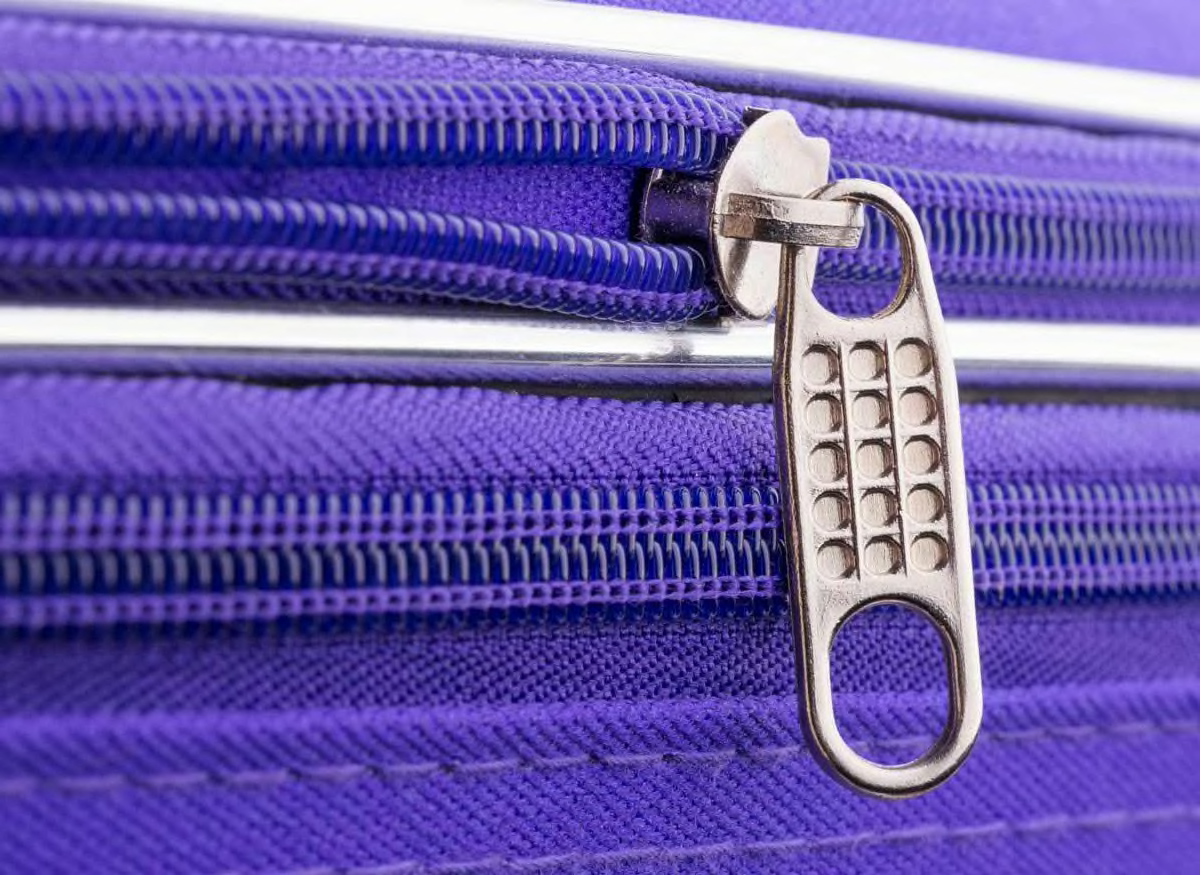
Zippers
Zippers are one of the best indicators of a suitcase’s overall durability. The most reliable are YKK zippers, which are highly regarded for their strength and smooth operation. Suitcases typically use one of two zipper types. Chain zippers have two sets of interlocking teeth, usually metal or molded plastic, making them sturdier, more difficult to break into, and more resistant to stress. Coil zippers, which slide on two parallel polyester coils, are lighter and more flexible but also less secure, since they can sometimes be pried apart under pressure and reclosed without leaving visible damage.
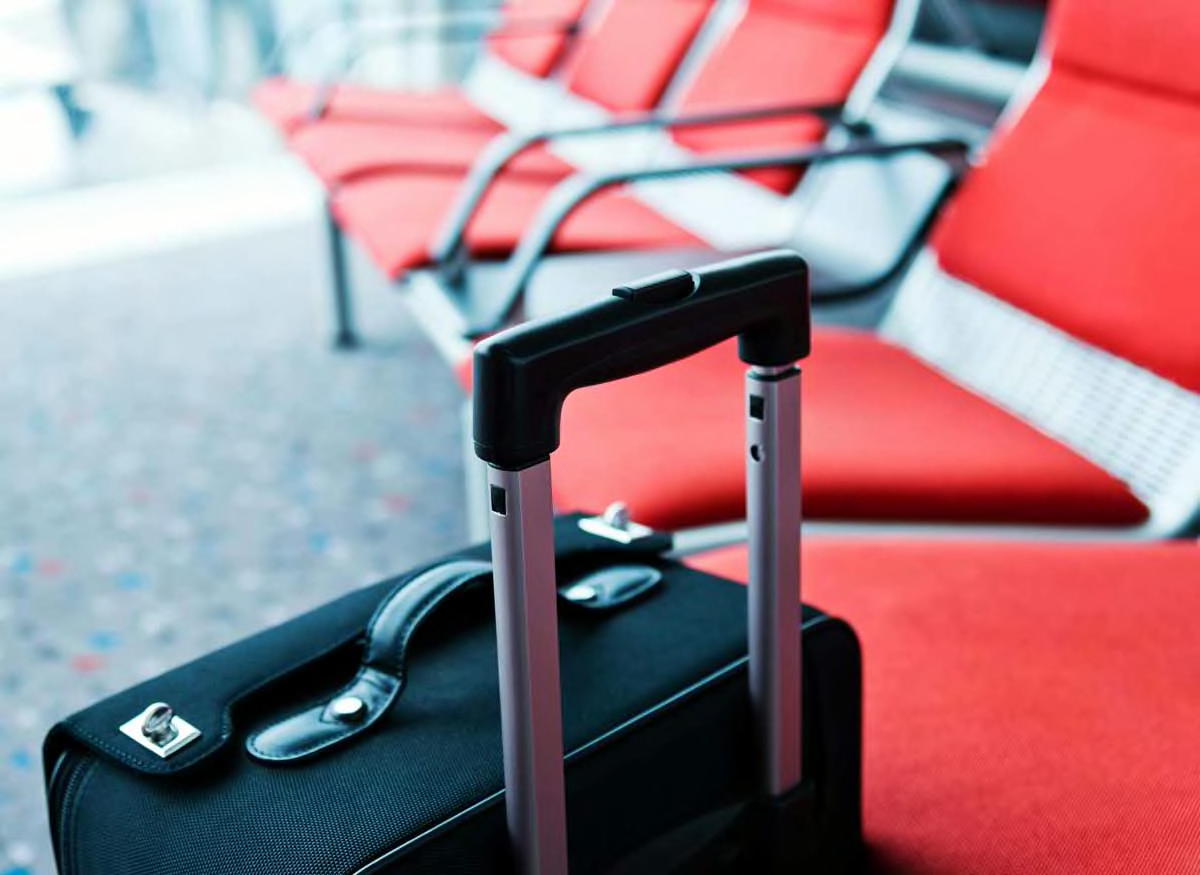
Handles
Wheeled luggage, which makes up most of the market, has retractable handles. For maximum comfort, look for an adjustable-length, soft-grip handle. One that retracts completely inside the bag is less likely to be damaged. Two-and four-wheeled bags can have one- or two-post handles, though the majority use two-post handles. Many travelers prefer a two-post handle system because it can piggyback a smaller bag while in transit or support a laptop, briefcase, or tote while at rest.
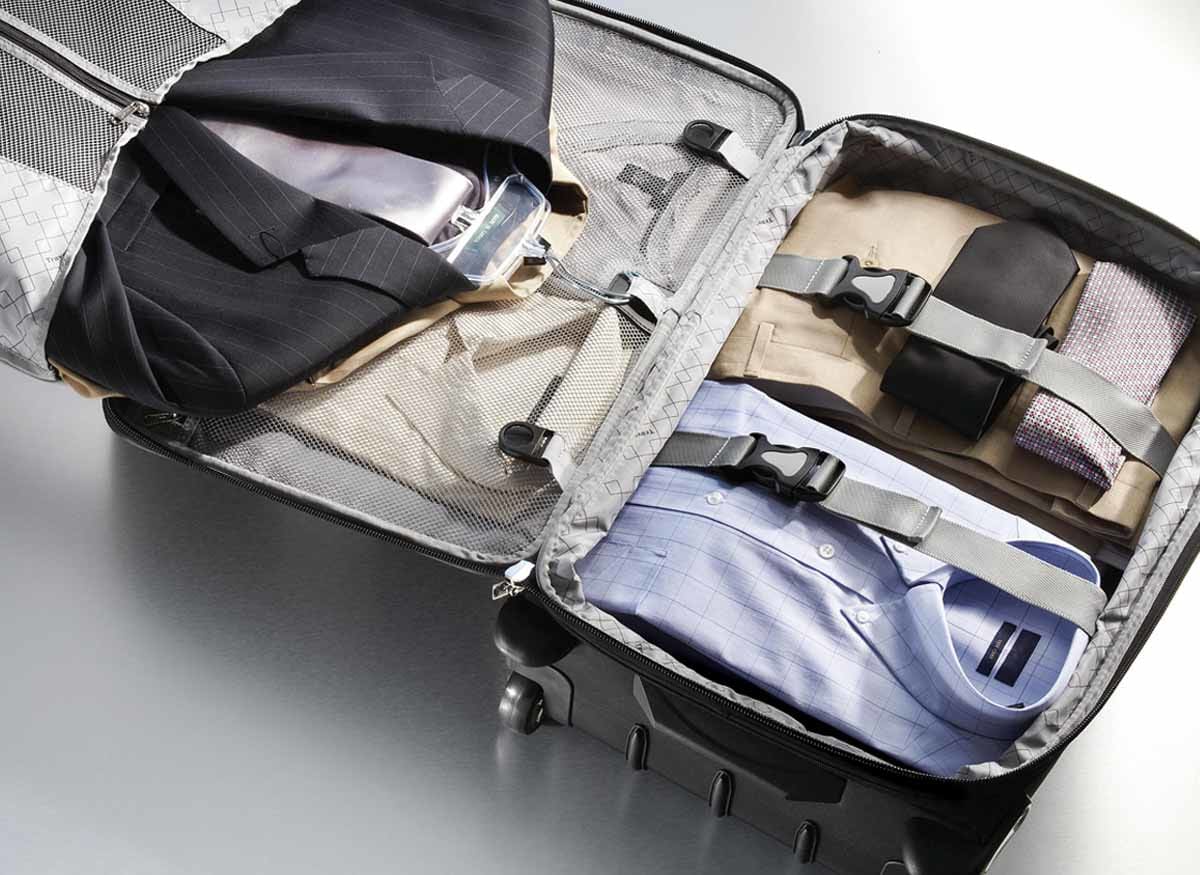
Compartments
The number, size, and configuration of luggage pockets or compartments are also considerations.
Many travel bags now come with dedicated, padded pockets for a laptop so that you can avoid carrying yet another bag. Some include zippered packing cubes, which are typically soft plastic or fabric boxes that further compartmentalize items; they can be compressed to help fit more in your bag. Another type of interior compartment is a suiter, which enables you to pack a suit inside your regular suitcase without having to carry a separate garment bag.
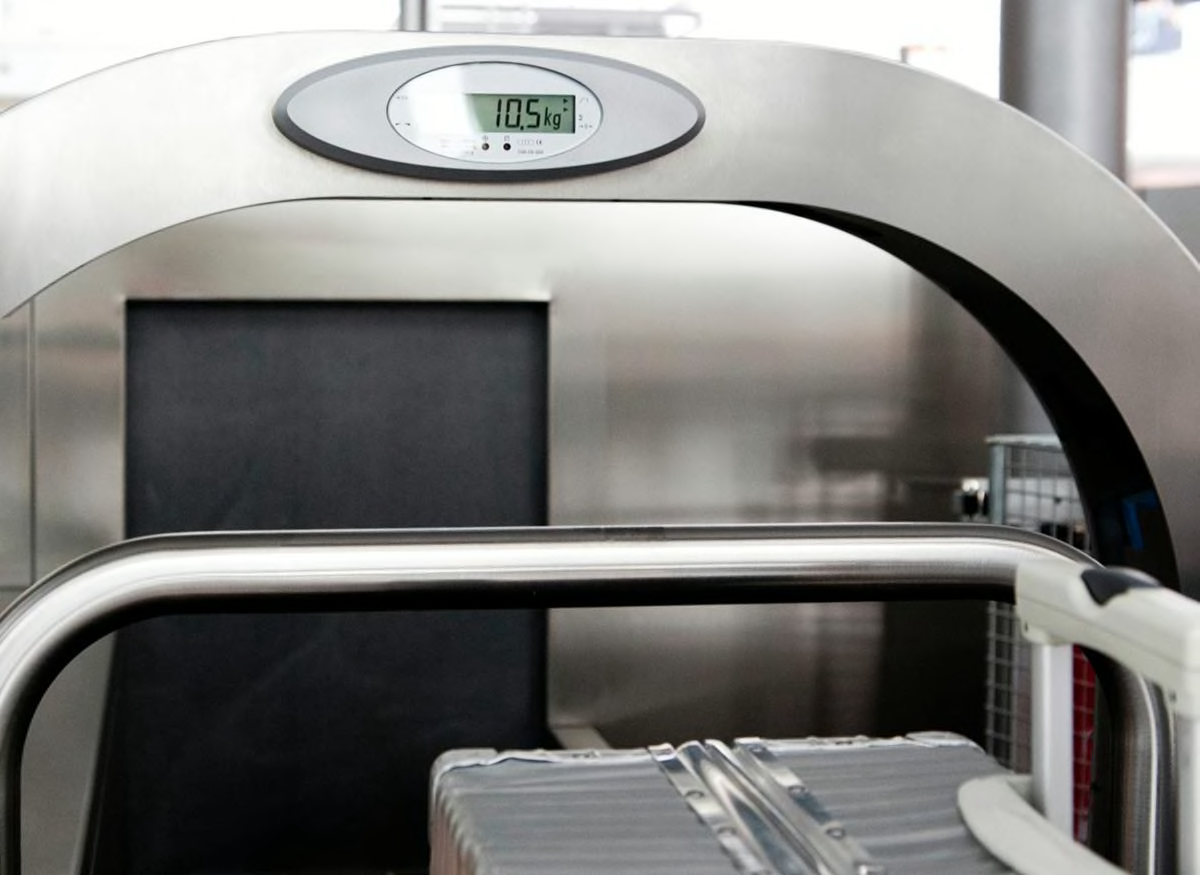
Weight
Traveling light is best, especially considering baggage fees. Our experts suggest that if you’re looking for a wheeled bag, it should weigh around 7 pounds or less when empty; for a nonwheeled bag, look for one between 2 and 4 pounds when empty.
For airline travel, most of the weight you lug around should be that of your belongings, not the bag. Before you leave, check with your air carrier about weight limits—you don’t want to have to pay a fee for overweight checked baggage, and you don’t want to have to check an overweight carry-on. (Although most airlines typically don’t weigh carry-on luggage, some have policies around the weight of your carry-on—for example, Hawaiian Airlines limits each carry-on to 25 pounds, while Frontier Airlines limits each to 35 pounds.)
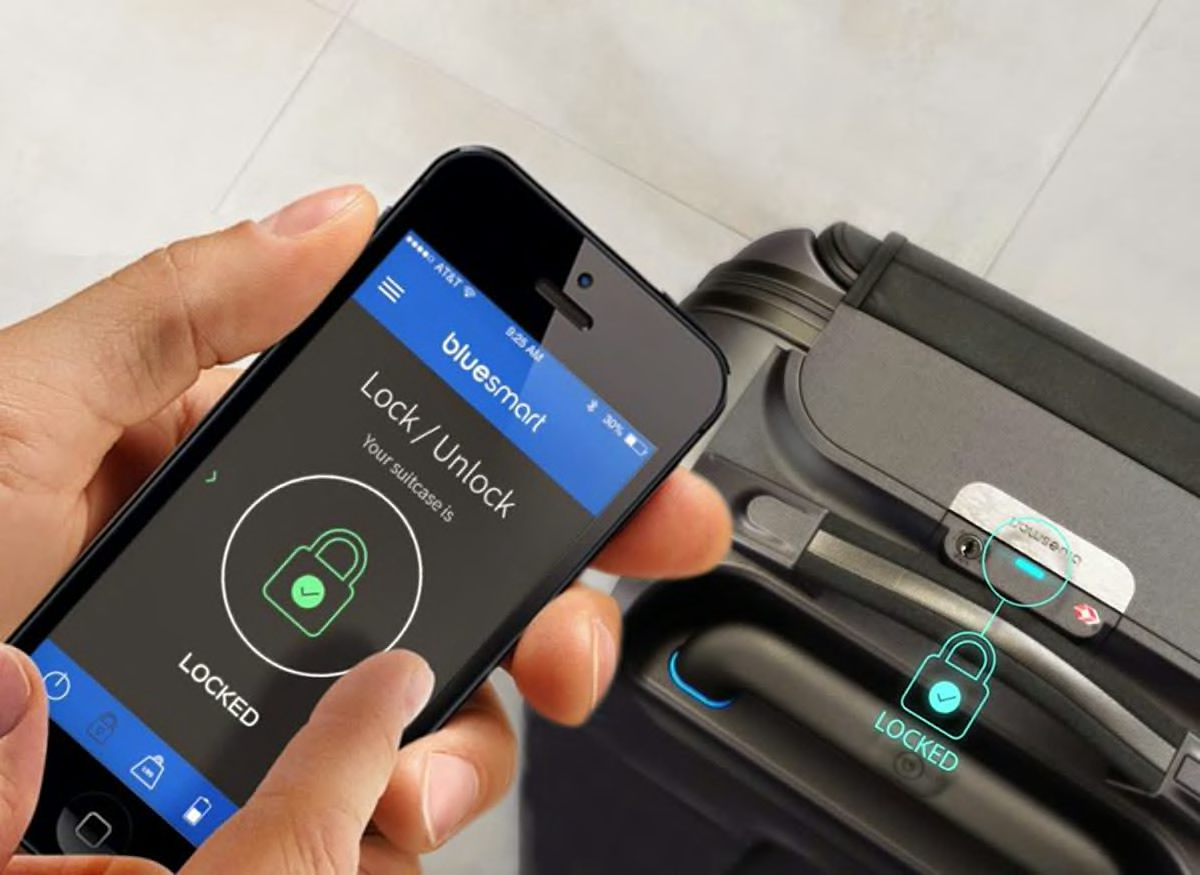
Smart Features
Built-in electronic capabilities are relatively recent luggage features. A “connected” suitcase knows where it is, how much it weighs, and who’s allowed to handle it by virtue of such functions as location tracking, built-in digital scales, digital locks, fingerprint recognition locks, proximity sensors, trip tracking, and compartments to hold and attach power sources for charging electronics. (Federal airline safety rules prohibit lithium-ion batteries in checked bags; carry them onboard with their contacts covered to prevent short circuits.)
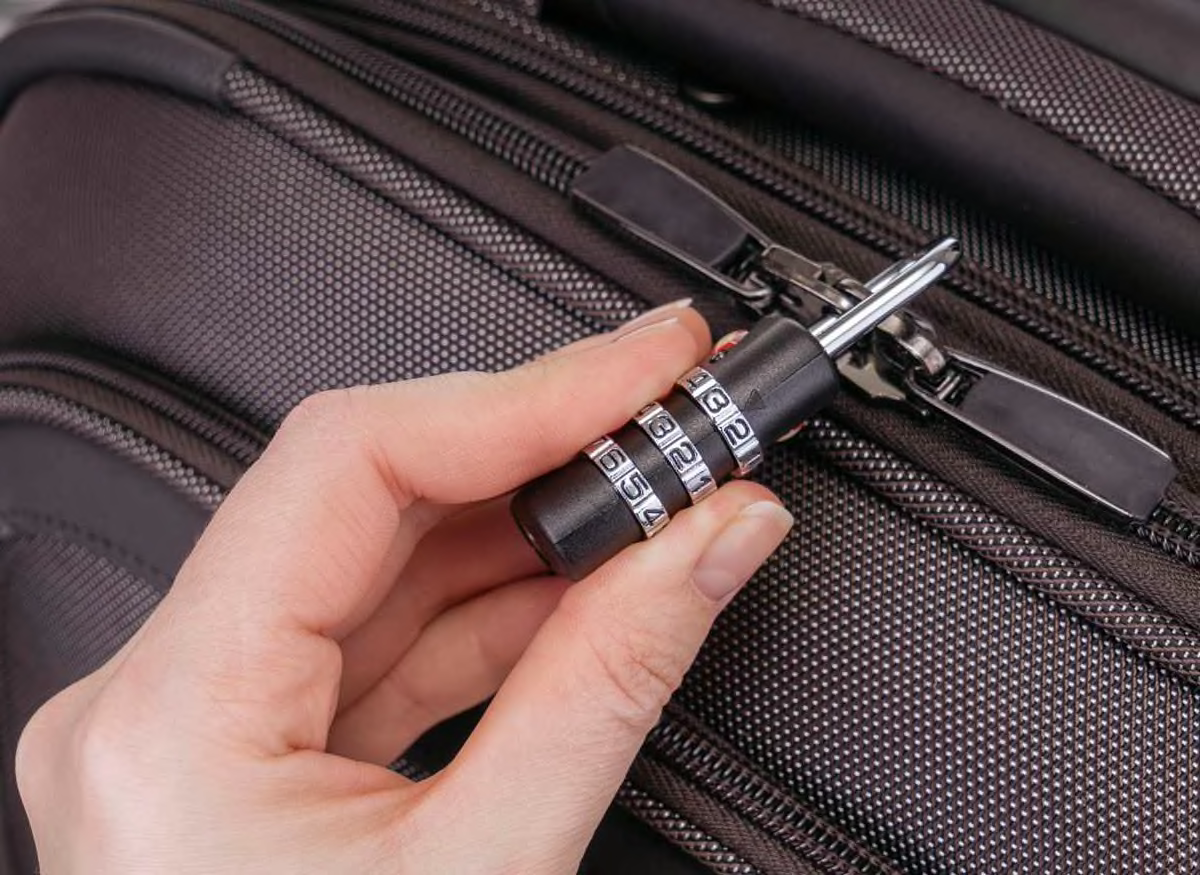
Locks
For U.S. travel, luggage locks have to be TSA-compliant, which means that Transportation Security Administration agents can use a universal master key to open your lock without breaking it if they have to physically inspect the contents of your bag. If you are buying an aftermarket lock, the packaging will state whether it is TSA-compliant. For integrated locks, the luggage’s sales tag will provide this information.
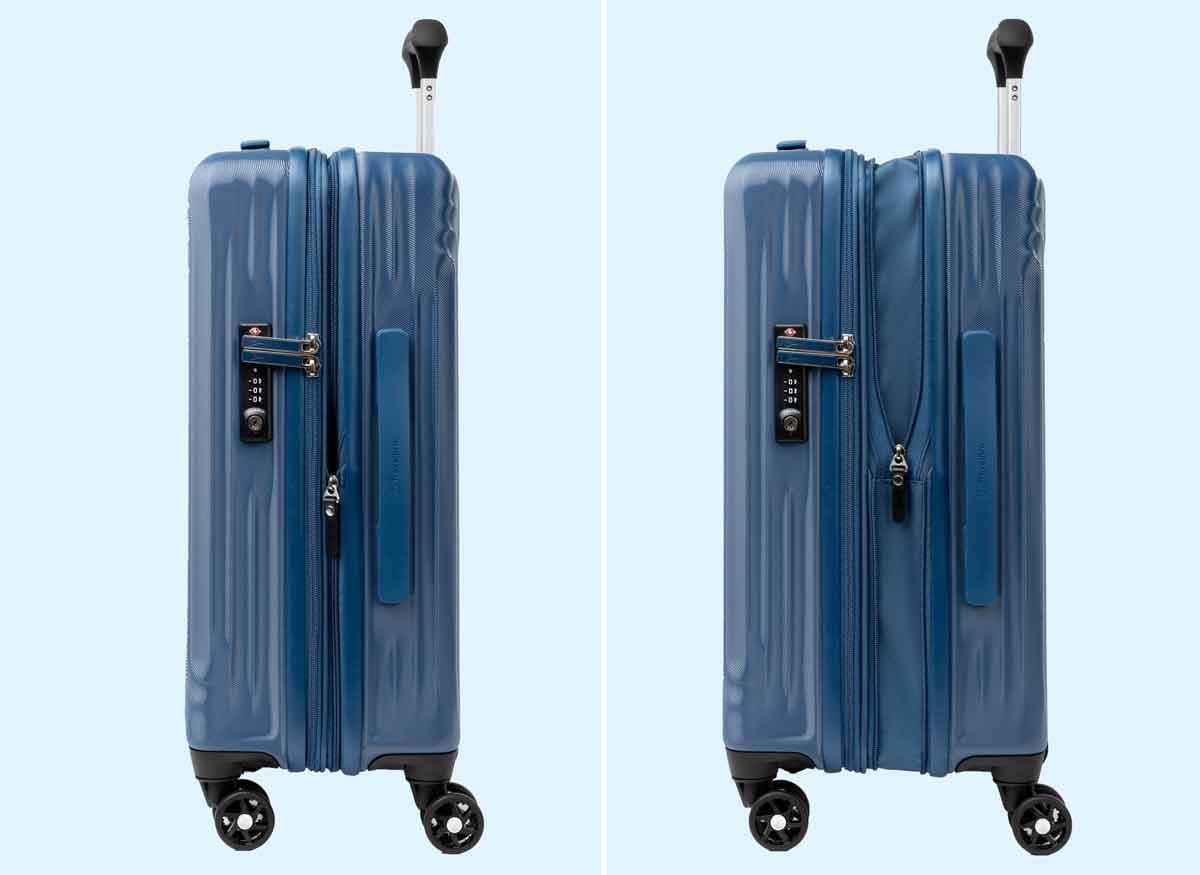
Expandability
Some hard-shell luggage pieces can be expanded. You pull a zipper between the two shells to reveal a middle area, covered by high-denier fabric. The space can be useful for packing a few last-minute items and for, say, bringing home souvenirs or other purchases. But in expanded mode, some won’t fit in an airplane’s overhead compartment, CR’s evaluations have shown. (CR hasn’t tested the durability of the fabric used in that middle expansion area.)
Zippers
Zippers are one of the best indicators of a suitcase’s overall durability. The most reliable are YKK zippers, which are highly regarded for their strength and smooth operation. Suitcases typically use one of two zipper types. Chain zippers have two sets of interlocking teeth, usually metal or molded plastic, making them sturdier, more difficult to break into, and more resistant to stress. Coil zippers, which slide on two parallel polyester coils, are lighter and more flexible but also less secure, since they can sometimes be pried apart under pressure and reclosed without leaving visible damage.
Handles
Wheeled luggage, which makes up most of the market, has retractable handles. For maximum comfort, look for an adjustable-length, soft-grip handle. One that retracts completely inside the bag is less likely to be damaged. Two-and four-wheeled bags can have one- or two-post handles, though the majority use two-post handles. Many travelers prefer a two-post handle system because it can piggyback a smaller bag while in transit or support a laptop, briefcase, or tote while at rest.
Compartments
The number, size, and configuration of luggage pockets or compartments are also considerations.
Many travel bags now come with dedicated, padded pockets for a laptop so that you can avoid carrying yet another bag. Some include zippered packing cubes, which are typically soft plastic or fabric boxes that further compartmentalize items; they can be compressed to help fit more in your bag. Another type of interior compartment is a suiter, which enables you to pack a suit inside your regular suitcase without having to carry a separate garment bag.
Weight
Traveling light is best, especially considering baggage fees. Our experts suggest that if you’re looking for a wheeled bag, it should weigh around 7 pounds or less when empty; for a nonwheeled bag, look for one between 2 and 4 pounds when empty.
For airline travel, most of the weight you lug around should be that of your belongings, not the bag. Before you leave, check with your air carrier about weight limits—you don’t want to have to pay a fee for overweight checked baggage, and you don’t want to have to check an overweight carry-on. (Although most airlines typically don’t weigh carry-on luggage, some have policies around the weight of your carry-on—for example, Hawaiian Airlines limits each carry-on to 25 pounds, while Frontier Airlines limits each to 35 pounds.)
Smart Features
Built-in electronic capabilities are relatively recent luggage features. A “connected” suitcase knows where it is, how much it weighs, and who’s allowed to handle it by virtue of such functions as location tracking, built-in digital scales, digital locks, fingerprint recognition locks, proximity sensors, trip tracking, and compartments to hold and attach power sources for charging electronics. (Federal airline safety rules prohibit lithium-ion batteries in checked bags; carry them onboard with their contacts covered to prevent short circuits.)
Locks
For U.S. travel, luggage locks have to be TSA-compliant, which means that Transportation Security Administration agents can use a universal master key to open your lock without breaking it if they have to physically inspect the contents of your bag. If you are buying an aftermarket lock, the packaging will state whether it is TSA-compliant. For integrated locks, the luggage’s sales tag will provide this information.
Expandability
Some hard-shell luggage pieces can be expanded. You pull a zipper between the two shells to reveal a middle area, covered by high-denier fabric. The space can be useful for packing a few last-minute items and for, say, bringing home souvenirs or other purchases. But in expanded mode, some won’t fit in an airplane’s overhead compartment, CR’s evaluations have shown. (CR hasn’t tested the durability of the fabric used in that middle expansion area.)
Luggage Frame: Hard-Shell or Soft-Sided?
Soft-sided luggage continues to dominate the market, but hard-shell luggage is quickly gaining popularity because of newer lightweight materials.
Hard-Shell Luggage
- Pros: Hard-shell luggage is best for protecting breakable contents; it also offers better security when fitted with an integrated lock. Hard-shell luggage stacks easily, making it ideal for cruise ships, because luggage is typically stacked in the belly of the boat before departure. If you tend to overpack, a hard-shell piece is ideal because there’s no chance of overstuffing it (though if you need added room, an expandable model is useful).
- Cons: Hard-shell luggage can scuff and scratch easily, and usually does not have outside pockets. A hard-shell carry-on that has been expanded might not fit in an airline’s carry-on sizer, or in the plane’s overhead bin.
Today’s hard-shell, or hard-sided, luggage is often made of high-tech plastics, such as polyethylene, ABS, and polycarbonate, which are lightweight and durable. ABS is lighter, but polycarbonate is more durable. The most durable, but also the heaviest, is aluminum.
Hard-shell luggage often features a 50/50 split opening, allowing you to pack two sides equally and stabilize the contents with an X-strap, a middle divider, or both. A few hard-shell carry-ons tested by Consumer Reports expand in the middle with zippers and heavy fabric. Note: Because hard-shell bags close like clamshells, you need double the surface space to open them. Most hard-sides are built this way, but some on the market have a top-lid opening.
Soft-Sided Luggage
- Pros: Soft-sided luggage is usually lighter in weight than hard-shell luggage, and often is expandable. It can flex and compress to conform to tight spaces, such as a plane’s overhead bin, sometimes even when expanded. This flexibility also enables you to squeeze in an extra outfit. This type of luggage could be easier to pack into a car trunk or store at home.
- Cons: Soft-sided luggage is not as protective as hard-shell luggage, and it’s vulnerable to ripping.
Soft-sided luggage is made of fabrics that yield, usually a woven nylon fabric, such as Cordura or ballistic nylon. Ballistic is the shinier of the two and, over time, can abrade, but abrasions will not compromise the strength of the fabric. Cordura is a little softer and abrasion-resistant, and is preferable for an over-the-shoulder bag. If you consider a suitcase made of ripstop nylon, or “parachute material,” make sure that it is a high-denier fabric, which means it’s more durable.
Luggage Features: Wheels or No Wheels?
Wheeled suitcases make up at least two-thirds of all luggage sales today. If you plan on rolling your own luggage, your first decision is whether to buy a two-wheeler or a four-wheeler.
Two-Wheel Luggage
Suitcases with two wheels, also called rollers, use the same type of wheels found on in-line skates—they roll only forward and backward, not side to side. The suitcase rolls behind you as you pull it from the extending handle.
- Pros: Two-wheel luggage has recessed wheels, which protect them from snapping off during rough handling.
- Cons: Some travelers complain that dragging two-wheelers causes shoulder, wrist, or back pain. It can also be cumbersome in a crowded space because you need clearance between yourself and the bag. Plus, the recessed wheels take up valuable space in the bag’s interior packing area.
Four-Wheel Luggage
Suitcases with four wheels (as in, four single wheels or four double wheels) are called spinners. Each of their wheels swivels 360 degrees. You can push them, pull them, wheel them alongside yourself, and turn them in any direction.
- Pros: Four-wheel cases are easier to navigate in tight spaces. A heavy or large suitcase may also be easier to manage with four wheels because, unlike two-wheelers, you don’t have to drag the suitcase. Ergonomically, the spinner is a better choice than the roller because it does not put stress on your shoulders.
- Cons: Wheels are externally mounted, not recessed, so they are vulnerable to snapping off. (Wheels attached with screws are more secure than those with rivets, according to experts.) Carry-ons with spinner wheels may have less room inside than those with recessed wheels because the maximum allowable dimensions include the wheels. A spinner won’t remain stationary on an incline; you have to hold on to it or lay it on its side.
No-Wheel Luggage
You might want to buy no-wheel luggage under these circumstances:
- To ensure the maximum possible interior volume for your luggage. Wheels and handles can eat into the space of a bag.
- You expect to take your bag on bumpy, rough, sandy, or icy surfaces, where wheels are difficult to manage.
- You won’t ever have to handle your own luggage—for instance, on a luxury tour.
More Luggage Shopping Tips
If you shop at a walk-in store, use the following tips to make sure a piece of luggage is right for you. If you order online, carefully read the description and warranty information on the website, and as soon as you receive the item, run it through these same tests.
Break Out the Tape Measure
Ignore tags, labels, or promotions that proclaim “official carry-on luggage.” Although for domestic flights on major carriers, your carry-on can’t be larger than 22x14x9 inches, there’s no regulation that otherwise dictates carry-on size—airlines impose their own restrictions, and the limits can vary among airlines and even among aircraft. Know the rules of the airlines you plan to fly. Measure the dimensions yourself and make sure the measurements account for all parts, including outer pouches, wheels, and handles.
Hold That Handle
Check the wrist angle and the feel of the grip on the suitcase’s handle. For maximum durability, the handle should move smoothly as you pull the bag. Also, check to ensure there is little to no wiggling or rattling as you extend and retract the handle.
Wheel It Around
The suitcase’s wheels should roll smoothly and stay in place. Gently jiggle the wheels with your hands to make sure they are firmly attached.
Check the Interior Capacity
The outside measurements of the suitcase are important, but don’t forget to consider how roomy the inside is. This can be difficult to do because many manufacturers don’t disclose the suitcase’s interior volume. (Consumer Reports does, in our hard-shell carry-on ratings.) Look for these features that maximize interior space:
- Squared edges: Curved corners cut space.
- Integrated outer compartments: Outside zip compartments should be on the same geometric plane as the main part of the bag—protrusions waste space. Keep in mind, though, that stuffed outer compartments may mean less space inside the bag.
- No wheels or handles: If you really need to make the most of every interior inch, forgo recessed wheels and handles. They reduce total packable space.
Check the Warranty and Return Policy
If you want a bag for the long haul, get the one with the best manufacturer’s warranty. Of course, the best option is a lifetime warranty to repair or replace the bag. Check the warranty for specific requirements, such as exclusions for when an airline damages your suitcase.
Briggs & Riley, for example, has a generous guarantee. It’ll repair all functional (not cosmetic) aspects of its bags for each bag’s lifetime, even if you no longer have your receipt and didn’t register your luggage with the company. Away, with a limited lifetime warranty (there are exclusions), lets you "gently test" its bags for up to 100 days, and then return them, unused, for your money back.



























